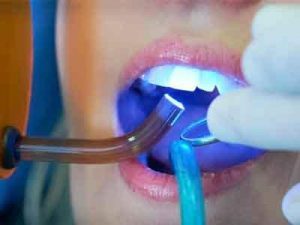- Home
- Editorial
- News
- Practice Guidelines
- Anesthesiology Guidelines
- Cancer Guidelines
- Cardiac Sciences Guidelines
- Critical Care Guidelines
- Dentistry Guidelines
- Dermatology Guidelines
- Diabetes and Endo Guidelines
- Diagnostics Guidelines
- ENT Guidelines
- Featured Practice Guidelines
- Gastroenterology Guidelines
- Geriatrics Guidelines
- Medicine Guidelines
- Nephrology Guidelines
- Neurosciences Guidelines
- Obs and Gynae Guidelines
- Ophthalmology Guidelines
- Orthopaedics Guidelines
- Paediatrics Guidelines
- Psychiatry Guidelines
- Pulmonology Guidelines
- Radiology Guidelines
- Surgery Guidelines
- Urology Guidelines
Excess chewing linked to periodontitis

A new study reveals that masseter muscle activity might be related to the severity of periodontitis.
Rsearchers at Okayama University reported in Archives of Oral Biology that involuntary masseter muscle activity, an unnecessary motion of the muscles normally used for chewing, may be linked to a common dental disease known as periodontitis.
Periodontitis is an infection of the gum, damaging jaw tissue and ultimately destroying the bone holding teeth in place, resulting in tooth loosening and loss. Medical researchers have been investigating the relationship between periodontitis and the activity of the masseter muscles. Specifically, it has been unclear whether involuntary teeth grinding and jaw clenching, a condition known as bruxism, is related to periodontitis and its development.
Read Also: Most times antibiotics for dental prophylaxis unnecessary
The study enrolled sixteen subjects with no or mild periodontitis (NMP group) and 15 subjects with moderate or severe periodontitis (MSP group).
Each individual was equipped with an ambulatory portable device measuring muscle activity via a technique known as surface electromyography. (The technique involves placing electrodes on the skin lying over the muscle; muscular motion triggers an electrical signal which is recorded.) Participants of the study had to maintain a diary noting their activities including eating meals, which helped the researchers analyzing the data and filtering out a muscular activity not coming from involuntary teeth grinding. Teeth movement due to the speech was filtered out by monitoring voice activity by a microphone attached to the electrodes.
The study found that there was no significant difference in plasma IgG antibody titers against P. gingivalis between the NMP and MSP groups. During waking hours, the duration of masseter muscle activity with an intensity of >20% MVC was significantly longer in the MSP group than in the NMP group. During sleeping hours, the duration of masseter muscle activity at all MVC intensities was significantly longer in the MSP group than in the NMP group. Additionally, the duration of phasic and mixed episodes was significantly longer in the MSP group than those in the NMP group while both awake and asleep.
Read Also: Chewing gums to prevent Dental Caries : Reports Trial
The finding applies to both awake and asleep regimes. The investigators concluded that masseter muscle activity might be related to the severity of periodontitis.
Bruxism is the term for non-functional, habitual teeth grinding or jaw clenching. (Eating and talking are functional activities.) Two types of bruxism are distinguished: when a person is asleep (nocturnal bruxism) and when awake. Symptoms typically associated with both types of bruxism include hypersensitive teeth, headaches, damage to dental fillings and tooth wear.
For full information log on to https://doi.org/10.1016/j.archoralbio.2018.02.021

Disclaimer: This site is primarily intended for healthcare professionals. Any content/information on this website does not replace the advice of medical and/or health professionals and should not be construed as medical/diagnostic advice/endorsement or prescription. Use of this site is subject to our terms of use, privacy policy, advertisement policy. © 2020 Minerva Medical Treatment Pvt Ltd